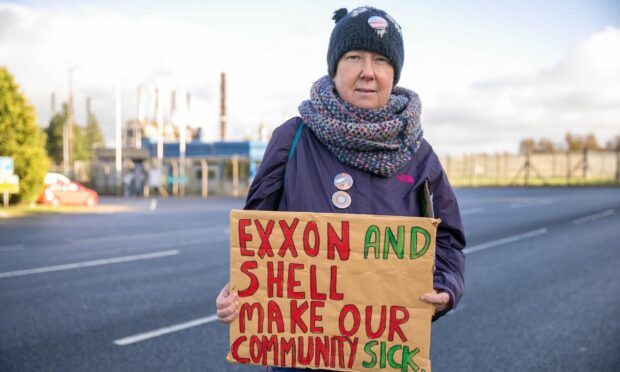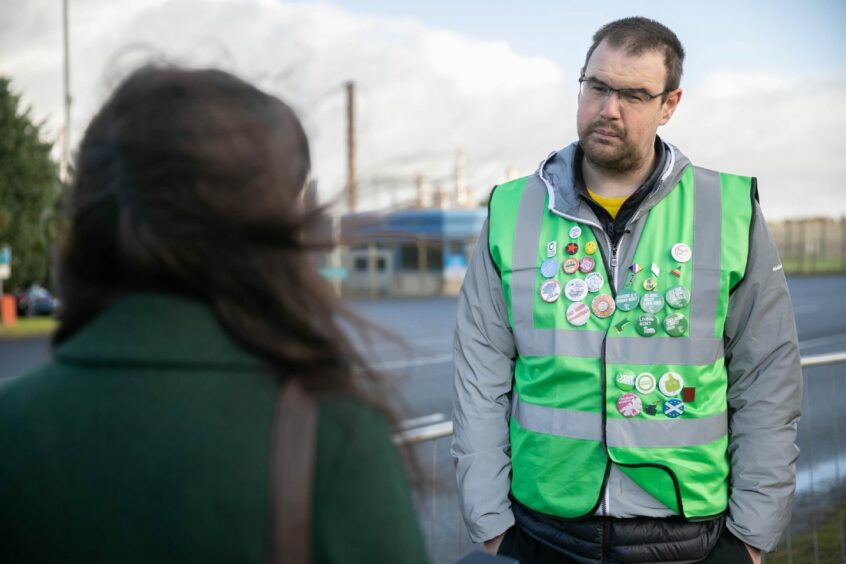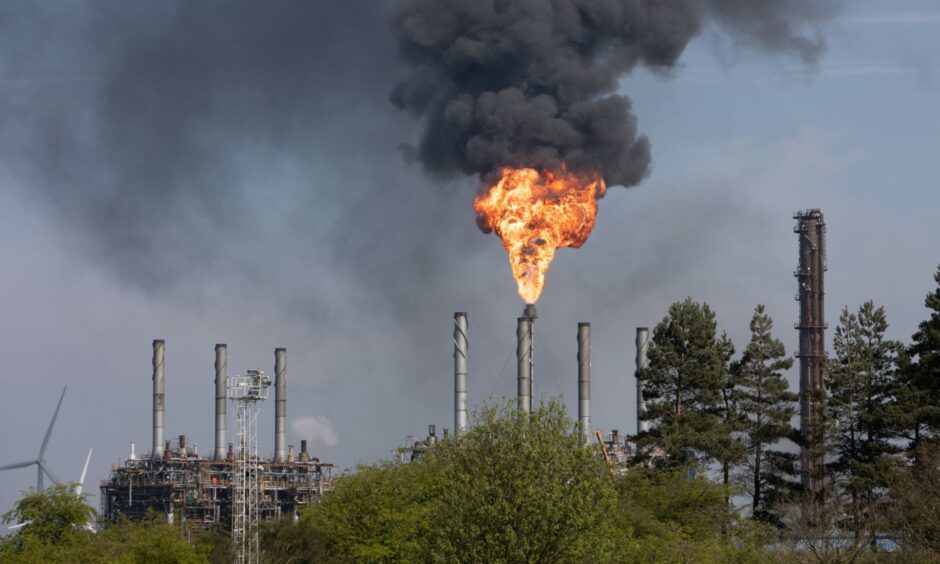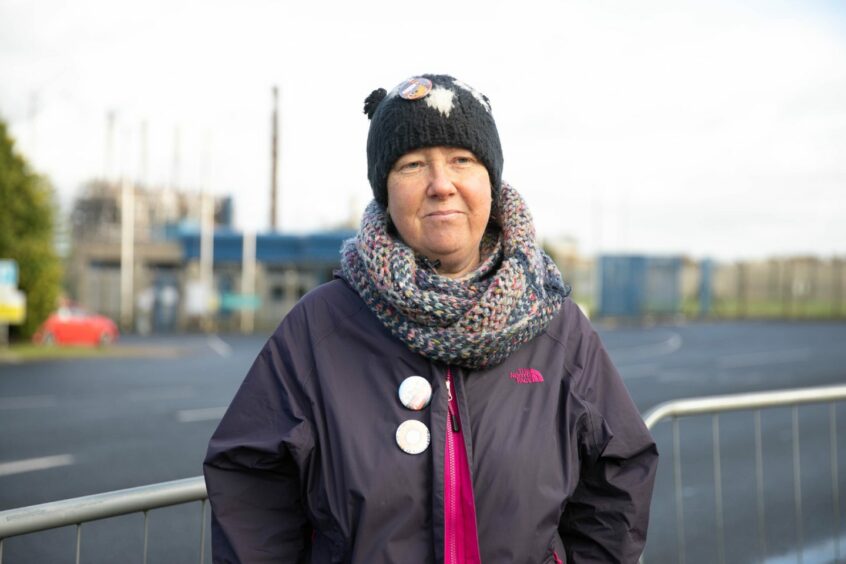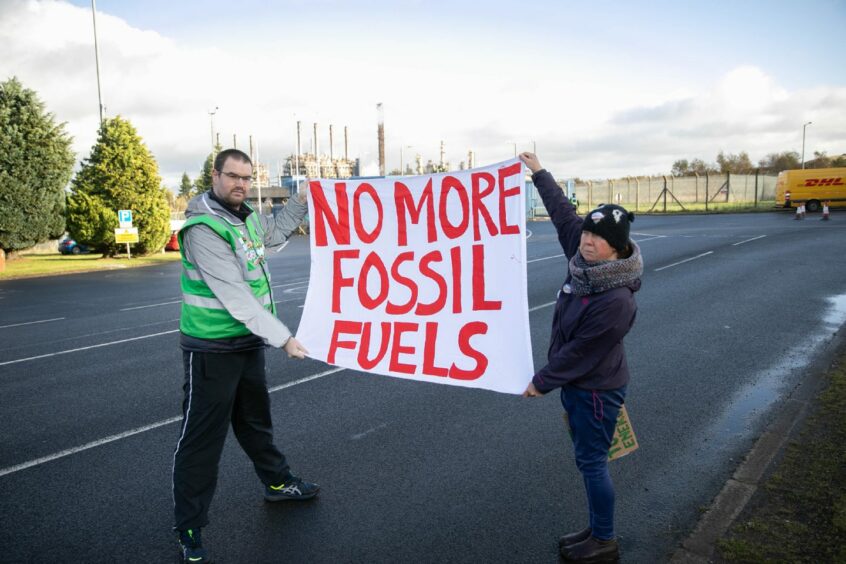Mossmorran activists plan to take their campaign against gas flaring to world leaders at COP26.
Protest group Actions Speak Louder Than Words is hoping to carry a model of the Fife ethylene plant’s elevated flare stack to the climate summit in Glasgow.
We spoke to group members Bryce Goodall and Jemma Kettlewell as part of our COP26 road trip.
“We are taking a flare, metaphorically speaking, to COP26,” said Bryce.
“We’re hopefully going to take it all the way to Edinburgh, to the Scottish Parliament, and after that all the way to COP26.”
He said the move would “symbolise what Mossmorran is”.
“Because this flare can be seen all the way into Edinburgh.”
Gas flaring sparked campaign

Bryce started campaigning for the closure of Mossmorran after gas flaring literally shook local communities.
During unplanned flaring events, residents inundated the Scottish Environment Protection Agency (Sepa) with hundreds of complaints.
Flaring brings with it light and noise pollution, and vibrations. Windows miles from the site have been known to rattle.
ExxonMobil could now face prosecution for the release of hydrocarbons during gas flaring in Spring 2019.
The Health and Safety Executive confirmed it had submitted a report to the Crown Office earlier this year.
Bryce said the group’s pilgrimage to COP26 had the potential to be an “empowering experience” for activists representing local communities.
“So the local community aren’t forgotten about when these discussions are happening behind closed doors.”
What is gas flaring?
To understand why gas flaring happens as Mossmorran, it helps to know a bit about how the site works.
Mossmorran is made up of two plants which operate alongside each other.
ExxonMobil operates Fife Ethylene Plant (FEP) and Shell operates the adjacent Fife Natural Gas Liquids (NGL) Plant.
Natural gas from the North Sea and Norway arrives on shore at the St Fergus terminal near Peterhead.
At St Fergus, methane gas is removed. This supplies the National Grid – heats homes and powers gas cookers.
The left overs from that process go via an underground pipeline to be processed at Shell’s plant at Mossmorran.
Ethane, propane, gasoline and butane are separated out in Fife. The last three heat off grid houses, power barbecues and propel aerosol sprays.
Meanwhile, the ethane goes next door, where ExxonMobil converts it into ethylene – used to make plastic.
Products such as car windscreens, food packaging and medical equipment contain ethylene.
But if something goes wrong and FEP has to shut its systems down, the flow of ethane cannot be stopped.
In that situation, ExxonMobil burns off the ethane. This is flaring.
Investment in Fife ethylene plant after catalogue of disasters
Flaring began to happen too often.
Of the notable flaring incidents – as they were numerous – was a system failure in 2017, which triggered a seven day shutdown.
The first local residents knew of the incident was thick black smoke belching from the elevated stack.
Sepa later described the gas flaring as “both preventable and unacceptable”.
Matters reached crisis level in August of that year when two out of FEP’s three boilers failed.
It led to a six month shutdown.
By that time Sepa had already launched an investigation into the “unacceptable” Easter Sunday flaring.
Sepa subsequently ordered ExxonMobil to make the plant safe.
This prompted the recent £140 million upgrade. An enclosed ground flare is also being built to eliminate light, noise and vibration pollution.
Mossmorran Fife investment just a ‘greenwash’
Jemma from Actions Speak Louder Than Words said the enclosed ground flare would do no more than “make it look like there’s nothing coming out of there”.
She added: “It’s just really greenwash.
“My concerns are this plant was built 35 years ago and it’s past its sell by date.
“The pollution that comes off that plant is impacting Scotland’s climate targets. It’s impacting the UK climate targets.
“It’s impacting communities specifically.”
ExxonMobil recently announced it hopes to participate in the Acorn Carbon Capture and Storage (CCS) Project.
This would see carbon dioxide emissions from Mossmorran stored under the North Sea off the coast of Aberdeenshire.
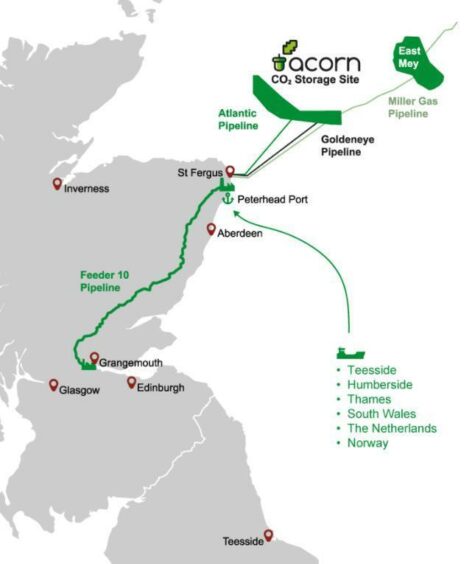
But Acorn recently hit a setback when it missed out on the first round of UK Government CCS funding.
Environmentalists including Friends of the Earth Scotland are also highly sceptical about the feasibility of CCS as a solution to the climate crisis.
Jemma said: “When our government leaders stand on the global stage next week, they can’t forget that plants like Mossmorran, and also at Grangemouth, are here impacting our climate targets, which have failed three years on the trot.
“We really need to take action on them.
“If our governments are serious about taking action on the climate, places like this in communities need to be dealt with too.”
Greenwash or commitment to net-zero?
Martin Burrell took over as plant manager at FEP in November last year.
He said ExxonMobil “supports society’s ambition to achieve net zero emissions by 2050”.
He added: “It’s going to take all of us — business, governments and consumers — to make meaningful progress.
“Our focus includes reducing our emissions, helping consumers reduce their emissions, and developing lower-emission energy solutions, including energy efficiency initiatives, biofuels, flare reduction and CCS.”
A Shell spokesperson said the oil giant “supports the goals of the Paris Agreement and the UK Government’s ambitious target of net zero emissions by 2050”.
“The Fife NGL plant, which is a critical part of the national energy system, recently reviewed its energy consumption and seeks to identify opportunities to optimise its energy use to reduce emissions.”
Shell maintains that emissions from Fife NGL Plant “pose no significant risk to the health of the local community.”
But campaigners say flaring at Mossmorran’s plants do have an impact on health.
Complaints during gas flaring have ranged from itchy eyes and headaches to children having nightmares, anxiety and respiratory problems.
Some local residents even fear cancer clusters in local communities are linked to Mossmorran.
A NHS Fife report in 2019 acknowledged wider health impacts, but said there was no evidence of higher cancer rates in surrounding communities.
This has not convinced Actions Speak Louder Than Words. They have called for more intensive air quality monitoring around the site.
